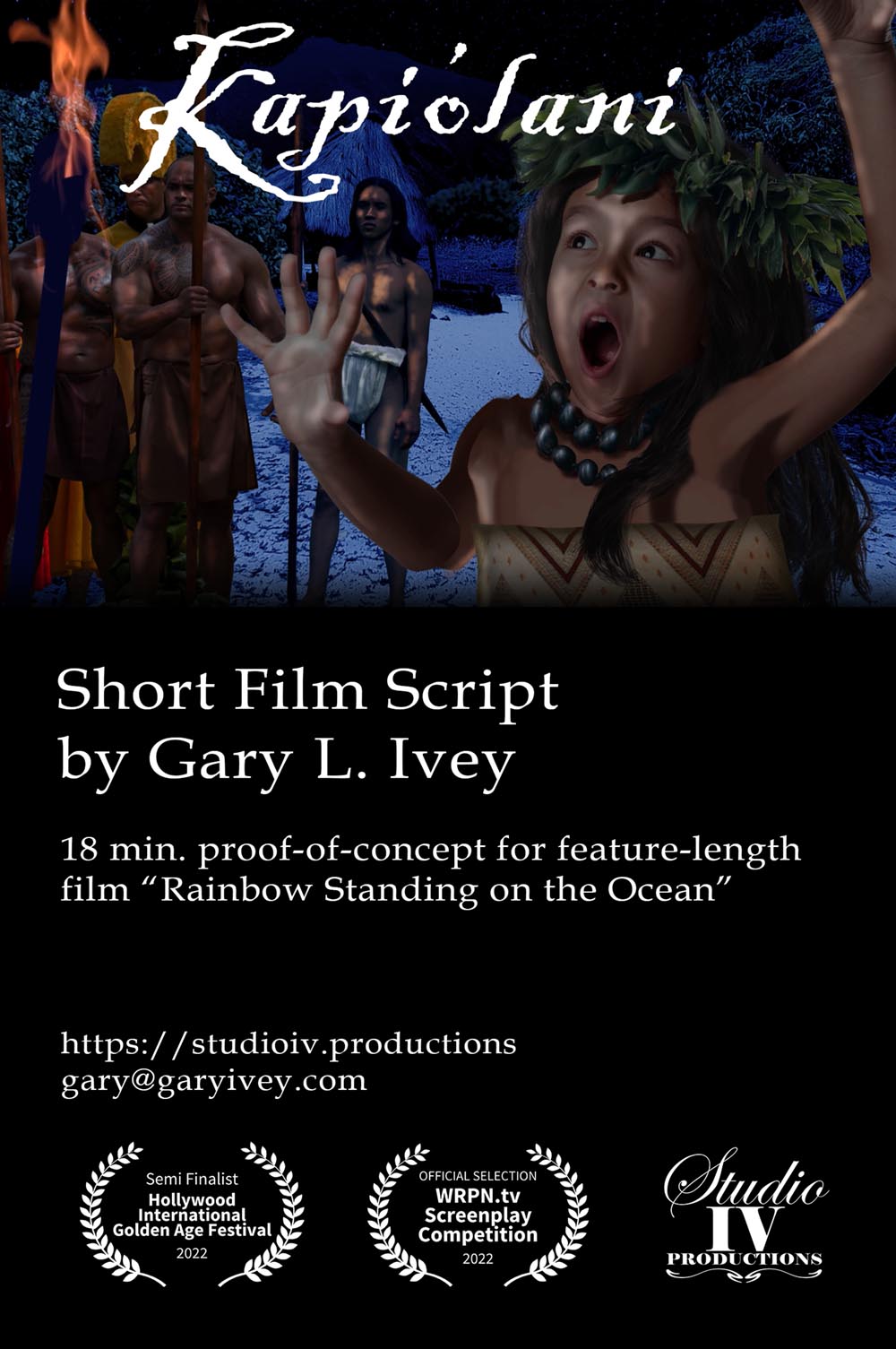Here is information about completed screenplays, “Looking for Morning,” “Vale of Shadows,” “Backlash,” “Age of the Kingdom,” “Looking for Faith” and “Flyboy” plus a short film “Kapi’olani.”
Kapi’olani
(Short Film)









A young Hawaiian princess causes the death of a friend when she violates a law of kapu, the cruel Hawaiian religion which includes human sacrifice. Many years later she finds peace after the kapu and its temples are destroyed.
Synopsis
It is 1791. The scene is Kealakekua Bay on the Island of Hawaii.
Kapi’olani, a 10 year-old Hawaiian princess, and Mau, an 11-year-old boy and Kapi’olani’s favorite servant, along with Keoua, another Ali’i (nobility) about Kapi’olani’s age, are playing on beach. At one point they run up into the trees and encounter the heiau (Hawaiian temple) and a frightening Kahuna (priest) Kuheleaumoku glowers down at them. They run away, frightened.
Kapi’olani asks Mau to take bananas for her, even though she knows under kapu, the Hawaiian religion, the penalty for a common woman eating a banana is death, but for Ali’i, it is life-long poverty, loss of rank and must remain unmarried.
Because Mau is so fond of Kapi’olani, he takes bananas from a hale (house) while the wife isn’t looking.
Later on the beach, Kapi’olani and Keoua eat bananas for the first time, but are caught by Kahuna Kuheleaumoku. He takes them to the village. All three children are crying.
There is a trial in front of the chief’s house. Villagers observe and Bodyguards stand on either side of the chief. Kuheleaumoku demands kapu be satisfied and mana restored. Kapiolani and Keoua are to suffer the penalty of life-long poverty, loss of rank and must remain unmarried. Kapi’olani’s aunt and guardian, Akahi, argues for her life. Kuheleaumoku takes Mau away instead, while Akoni restrains Kapi’olani.
That night in Akahi’s hale, Kapi’olani is incolsolable. Akahi tries to get her to eat, but she runs out to the beach in the dark.
The scene dissolves into a scene 28 years later of a heiau being burned. Kapi’olani as an adult is there with High Priest Hewahewa, King Kamehameha II, Queen Ka’ahumanu and Queen Keopuolani, watching the fire consume the temple. A Narrator informs us that Kapi’olani was among the Ali’i who did away with the cruel kapu religion in 1819.
In 1820, the two-masted ship “Thaddeus” anchors in Kailua Bay. The narrator informs us that the missionaries have arrived.
Missionary wife Laura Judd teaches Christianity to a group of Hawaiians under a tree in Kailua. She tells how Adam and Eve received a death sentence for eating forbidden fruit, but Jesus died in their place so they could have eternal life. Kapi’olani sees that Kuheleaumoku, now an old man, is there. She confronts him, asking, “What happened to Mau?” He replies, “Those were evil times, though we priest knew better. We did it to control the people.” “But what happened to him?” Kapi’olani asks again. “He was strangled at the altar.” Kapi’olani weeps and says “Why couldn’t the Christians have come sooner and taught us a better way?”
Kapi’olani sits on the beach at sunset. She holds a cross and looks up to the sky, praying to the God who made all things.
If you want to participate in this project, contact Gary Ivey.

